12 Amazing Facts About the Valleys of Kings and Queens in Egypt
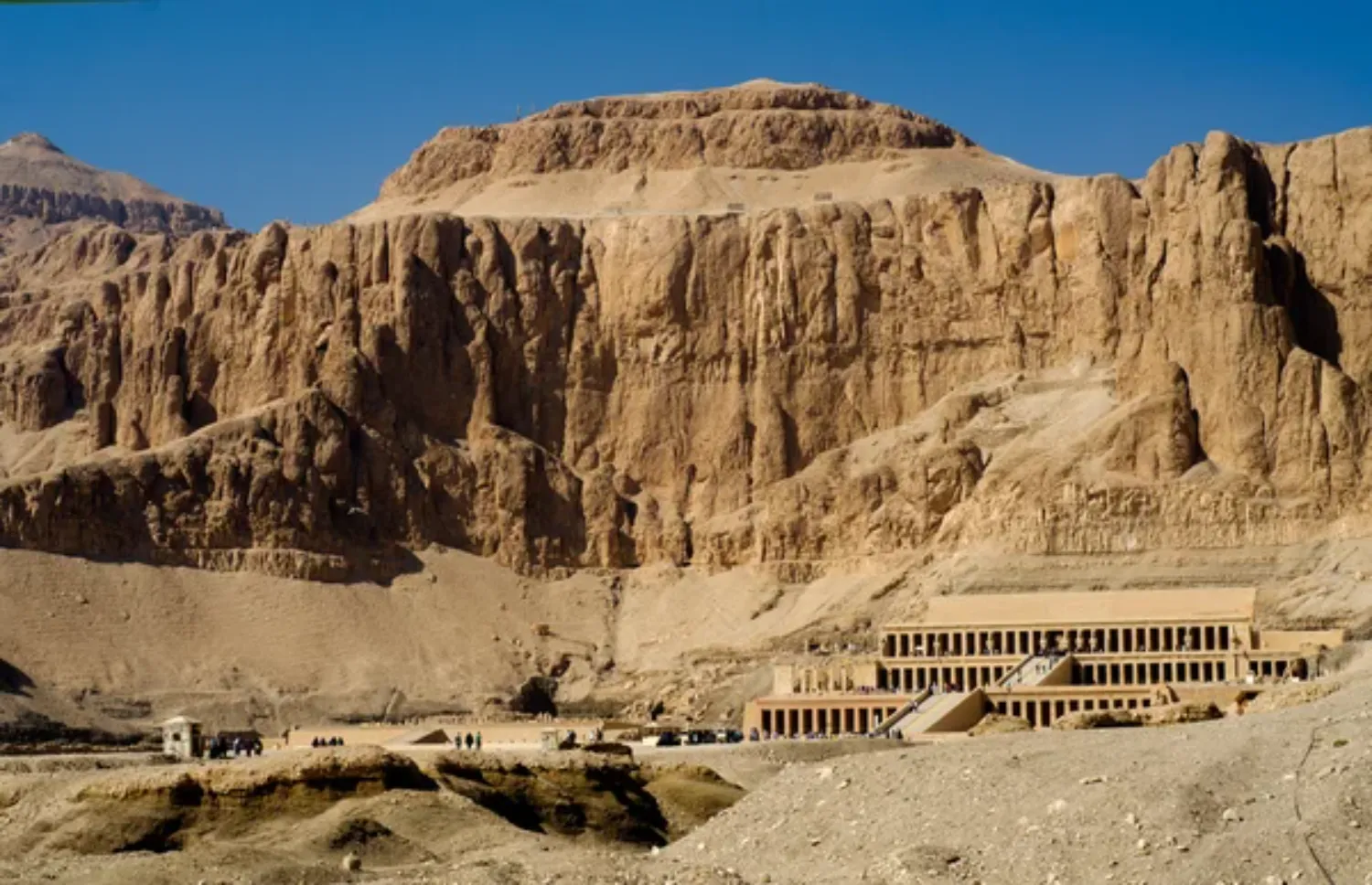
Updated On: November 10, 2023 by Ciaran Connolly
Many ancient Egyptian kings and queens were buried in the Valleys of Kings and Queens throughout history. These rulers contributed significantly to the glory of ancient Egypt, and their final resting places highlighted their importance to Egyptian history and culture.
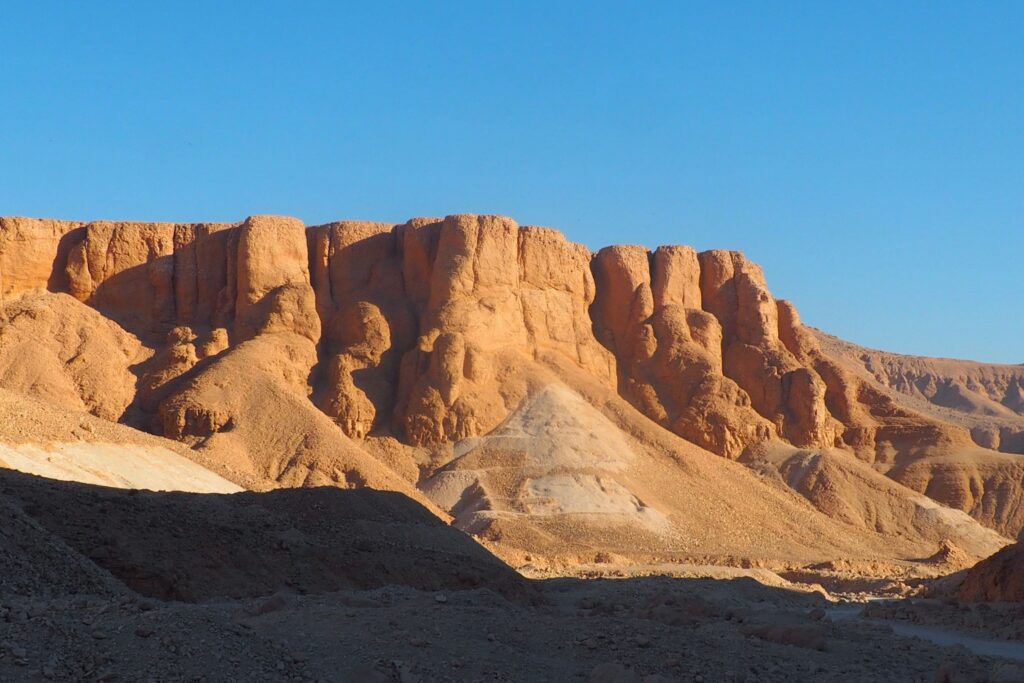
In the Valleys of Kings and Queens, located in Egypt and also in The New Kingdom, pharaohs, queens and nobles had rock-cut tombs carved out for them. Kings and queens were buried near their mortuary temples in magnificent tombs containing their most prized possessions.
In this article, we will explore some of the most interesting facts about the Valleys of Kings and Queens. Scroll down to check them out, or jump ahead by clicking on one of the highlighted sections below!
Table of Contents
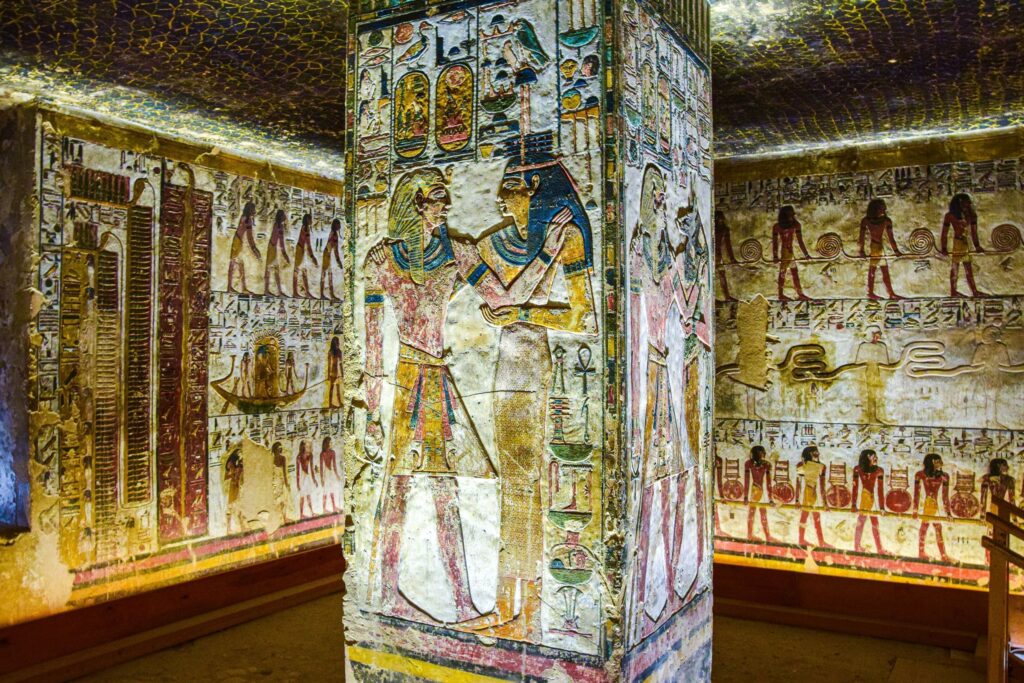
About the Valleys of Kings and Queens
The Valleys of Kings and Queens are iconic archaeological sites located on the west bank of the Nile River in the east-central part of Egypt between Karnak and Luxor. These valleys, known as Wadi Al-Mulk W Al-Malikat in Arabic, are renowned for their historical significance and the countless treasures they have revealed.
The Valleys of Kings and Queens are burial sites that were used for nearly 500 years during the New Kingdom period, approximately 16th to 11th centuries B.C. The valleys contain the tombs of pharaohs, queens, princesses, and other powerful nobles and royal family members.
The tombs are adorned with intricate hieroglyphics and vivid wall paintings that provide insight into ancient Egyptian beliefs and customs. These valleys offer a captivating glimpse into the art, architecture, and burial practices of ancient Egypt, making them a must-visit destination for history enthusiasts and archaeology lovers.
Ancient Egyptians were known for constructing enormous public monuments to honour their pharaohs, and this was their goal when they began constructing the Valleys of Kings and Queens. Work in the area now known as King’s Valley started in the 16th century B.C. and continued until the 11th century B.C.
The ancient Egyptians invested much time and resources into constructing underground mausoleums hidden from view. These underground chambers were made to serve as the resting place of their most significant leaders.
The ancient Egyptians had a firm faith in an afterlife, in which it was promised that their lives would continue after death and that pharaohs would be able to form alliances with the gods. This provided the ancient Egyptians with comfort and security when their leaders and loved ones passed away.
The Valleys of Kings and Queens were vital burial sites for Pharaohs over many centuries. However, by approximately 1500 B.C., Pharaohs were no longer constructing enormous pyramids to be buried as they had in the past; the Valleys of Kings and Queens were sealed and no longer used.
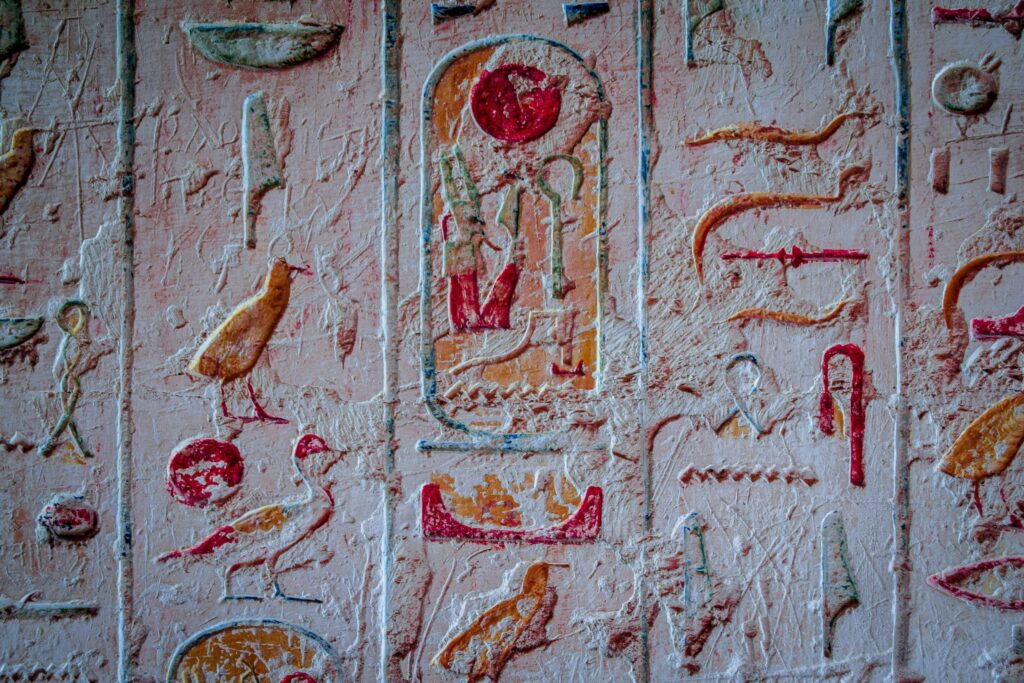
1. The Valleys of Kings and Queens are Located near Luxor
The enormous burial chambers known as the Valleys of Kings and Queens were built on the Western bank of the Nile River. The location is just across from the city of Luxor, home to the famous Luxor Temple complex and Karnak Temple.
In ancient Egypt, this area was called “Ta-Set-Neferu”, which translates to “The Place of Beauty”. It is unknown exactly why this site was chosen to construct dozens of tombs. Still, it is thought to have to do with either its proximity to the working-class Deir El-Medina village or the fact that there is a sacred site nearby: a cave-like structure called The Entrance of Hathor.
2. Early Male pharaohs were Buried in Another Nearby Necropolis
It’s possible that the Valleys of Kings and Queens were created near Luxor on the bank of the Nile because a necropolis used to bury previous male pharaohs was also located nearby.
This vast underground cemetery, with tombs adorned with detailed paintings and artefacts, is widely recognised across the globe as being among the most significant archaeological sites in Egypt.
3. There are 154 Graves in the Valley of Kings and Queens
The Valleys of the Kings and Queens in Egypt are home to a fascinating collection of tombs and graves that offer a unique window into the afterlife beliefs and practices of ancient Egyptians. In the Valley of the Kings alone, there are 63 known tombs, with perhaps more yet to be discovered.
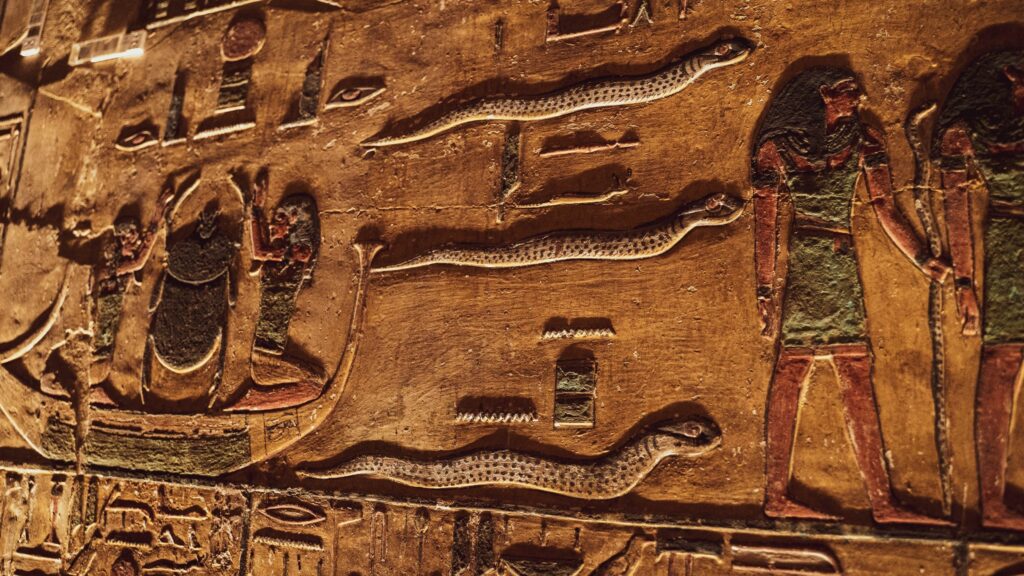
These tombs were primarily built to house the remains of pharaohs and high-ranking officials of the New Kingdom, and they are known for their intricate and elaborately decorated chambers. The most famous of these tombs include that of Tutankhamun, discovered by Howard Carter in 1922, which contained a wealth of well-preserved artefacts.
On the other side of the valley, the Valley of the Queens hosts a similar collection of 91 tombs and graves. Unlike the Valley of the Kings, the Valley of the Queens primarily served as the final resting place for royal women, including queens, princesses, and other female members of the royal family.
These tombs, though generally smaller in scale compared to those in the Valley of the Kings, are still richly decorated with scenes depicting the journey to the afterlife, religious rituals, and family life. Among the notable tombs in the Valley of the Queens is the tomb of Queen Nefertari, renowned for its stunning wall paintings that depict the queen’s journey to the Egyptian paradise.
In addition to the well-known tombs, there are numerous smaller graves and shafts scattered throughout both valleys, many of which remain unexplored or have yet to be fully documented. These lesser-known burial sites offer ongoing opportunities for archaeologists to uncover more about the individuals who were buried in them and the customs and beliefs of the time.
The Valleys of the Kings and Queens collectively represent an invaluable treasure trove of archaeological and historical knowledge, shedding light on the grandeur and spiritual beliefs of ancient Egypt’s elite and providing a glimpse into their intricate preparations for the afterlife.
4. The First Tombs in the Valleys of Kings and Queens were Built under Thutmose I
The first tomb erected in the Valleys of Kings and Queens was built as the resting place of Sekenenre Tao, who ruled during the 17th dynasty, and Princess Ahmose, daughter of Queen Sitjehuti.
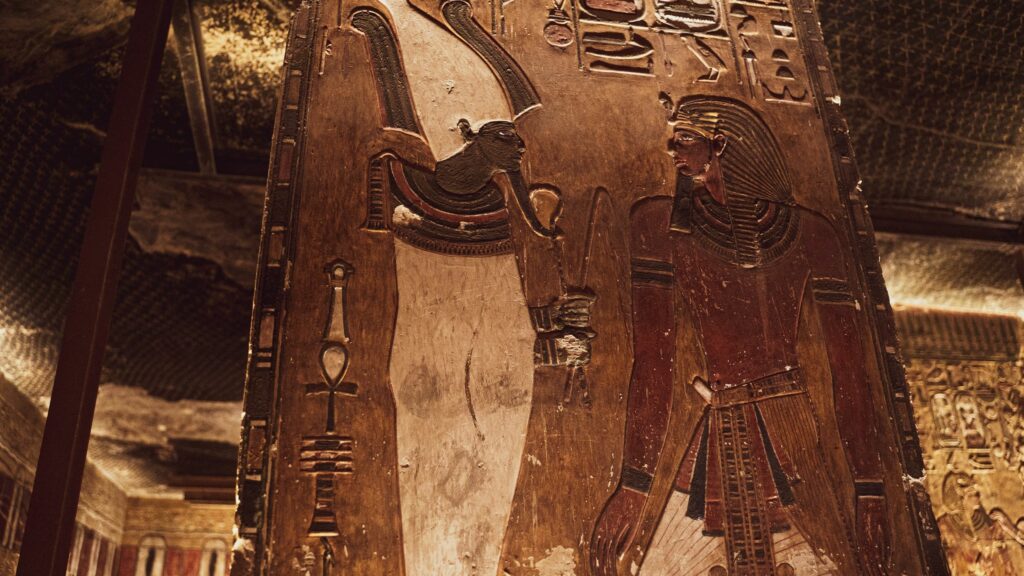
Sekenenre Tao
The tomb of Sekenenre Tao is a historically significant archaeological discovery. Sekenenre Tao was the last ruler of the 17th Dynasty of ancient Egypt, and his reign marked a tumultuous period in Egyptian history.
His tomb, known as KV 17, provides valuable insights into the political and military challenges faced by Egypt during the Second Intermediate Period, particularly the struggle against the Hyksos, who had occupied parts of northern Egypt.
The tomb of Sekenenre Tao is relatively modest compared to some of the grand tombs of later pharaohs in the Valley of the Kings. It consists of a burial chamber with a simple burial shaft, and its architecture reflects the transitional period in which it was constructed.
The tomb’s walls bear inscriptions and scenes that depict the pharaoh’s journey to the afterlife and religious rituals associated with his burial. The discovery of his mummy within the tomb revealed that Sekenenre Tao died a violent death, with evidence of head injuries possibly incurred in battle.
Sekenenre Tao’s tomb is historically significant not only for its archaeological value but also for the insights it provides into the political and military history of ancient Egypt during a critical period of its development.
His courageous efforts to resist foreign occupation laid the foundation for the eventual expulsion of the Hyksos and the unification of Egypt under the New Kingdom. As a result, the tomb of Sekenenre Tao holds a unique place in the rich tapestry of Egyptian history. It continues to be a subject of study and fascination for historians and archaeologists.
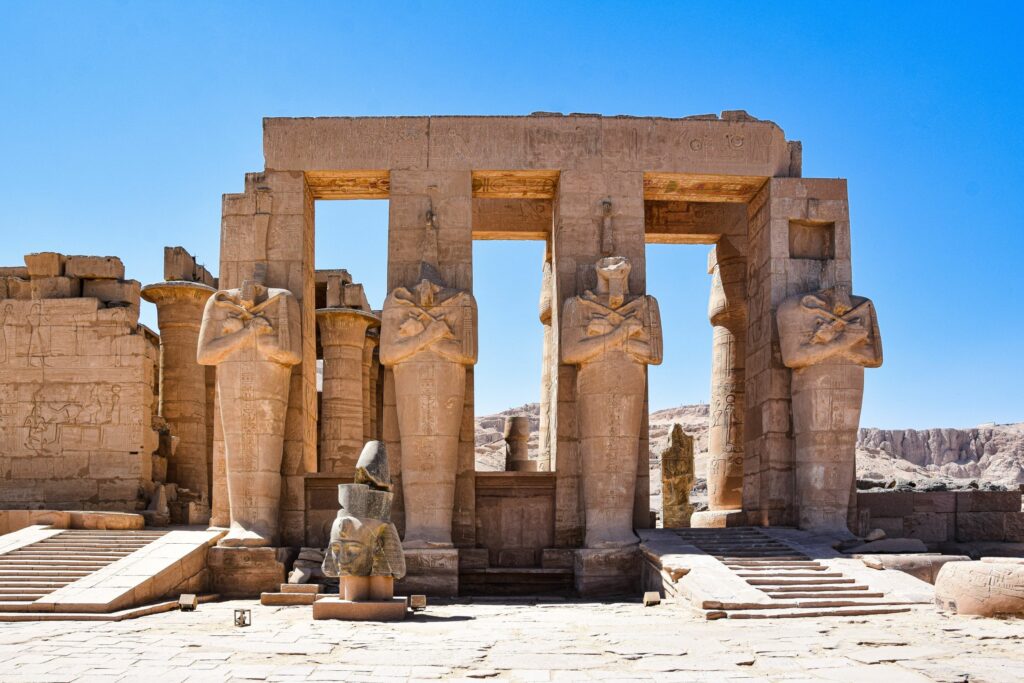
Princess Ahmose
The tomb of Princess Ahmose, located in the Valley of the Queens, is a captivating testament to the lives and burials of royal women in ancient Egypt. Princess Ahmose was a member of the royal family of the 18th Dynasty, which marked the beginning of the New Kingdom period in Egypt.
Her tomb, QV47, is one of the best well-preserved and artistically significant tombs within the valley. The tomb of Princess Ahmose features intricate wall paintings and hieroglyphic inscriptions that provide valuable insights into the religious and funerary beliefs of ancient Egyptians.
These scenes depict Princess Ahmose’s journey to the afterlife, with representations of deities, rituals, and offerings. The tomb’s decorative elements offer a glimpse into the daily life and customs of the elite during the New Kingdom era.
Princess Ahmose was likely a daughter of Pharaoh Seqenenre Tao II and Queen Ahhotep I, and she may have held a special status within the royal family. Her tomb, while smaller in scale compared to those of pharaohs, reflects the reverence and care given to the burial of royal women in ancient Egypt.
The tomb of Princess Ahmose, like other tombs in the Valley of the Queens, continues to be a valuable source of historical and archaeological knowledge, shedding light on the roles and lives of royal women in ancient Egypt and contributing to our understanding of the rich tapestry of Egyptian civilization.
5. Cats Were Sometimes Buried in the Valleys of Kings and Queens
Cats held immense significance in the culture and beliefs of ancient Egypt. They were revered and even considered sacred animals. The reverence for cats in ancient Egypt can be traced back over 4,000 years, with the earliest evidence of domesticated cats dating to this period.
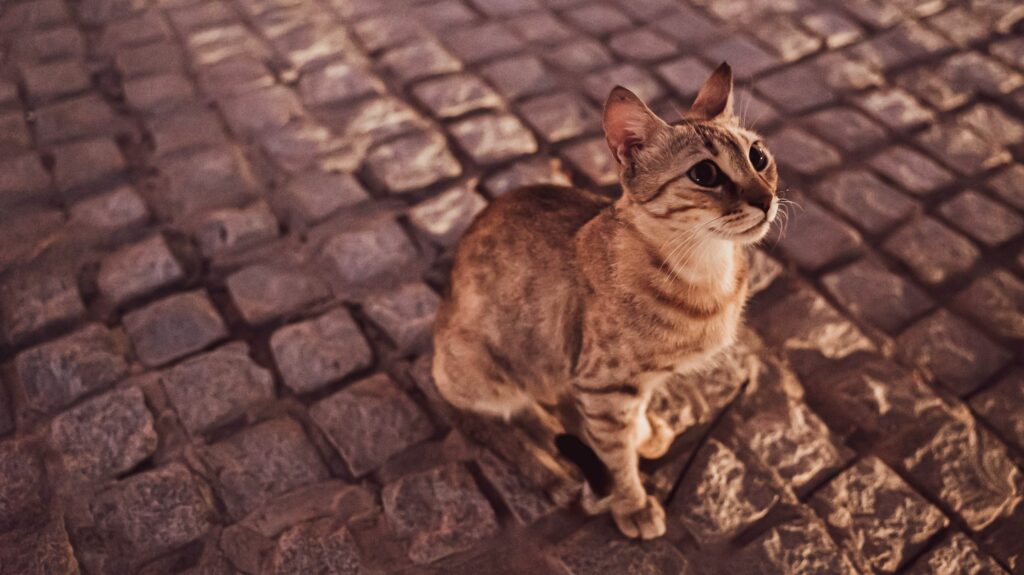
Cats were associated with the goddess Bastet, a lioness goddess of warfare who later evolved into a feline deity representing home, fertility, and protection. Bastet was often depicted with the head of a lioness or a domestic cat, and she became one of the most popular and widely worshipped goddesses in ancient Egypt.
Cats were valued for their ability to protect homes and crops from rats, mice, and other pests, making them practical companions for ancient Egyptian households. Beyond their practical utility, cats were also seen as embodiments of grace and agility, qualities that were highly admired.
Because of their dual role as protectors and symbols of grace, cats became beloved pets and were often treated as family members.
The close bond between ancient Egyptians and their cats is evident in their practice of burying cats alongside their human owners. Many cat cemeteries have been discovered in Egypt, where these cherished pets were interred with care and respect.
These burial sites, such as the one in Bubastis, are filled with mummified cats and offerings, reflecting the belief in an afterlife where these animals would continue to protect and accompany their owners. The act of burying cats with their owners was a symbolic gesture of eternal companionship and the deep cultural significance of these animals in ancient Egyptian society.
6. Before the 19th Dynasty, Anyone Could be Buried in the Valley of the Queens
The fact that the Valley of the Queens was not exclusively used for the burial of queens in the past is undoubtedly one of the fascinating aspects of this area. The underground tombs were also used as burial places for other high-ranking women in ancient Egypt.
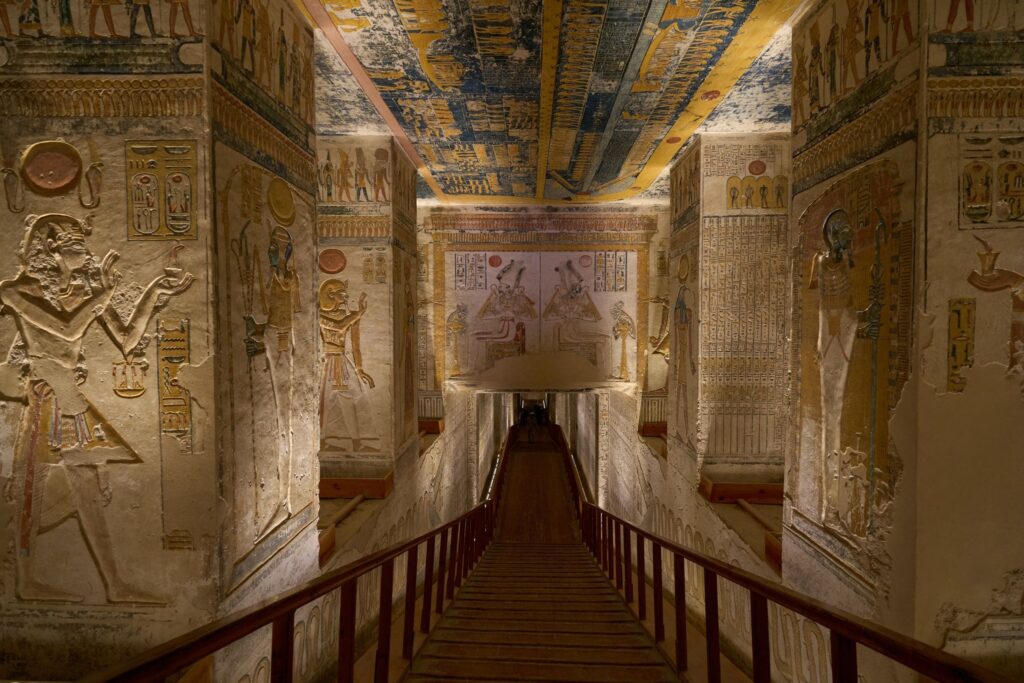
It was in the 19th dynasty that they began to be more selective when choosing who could be buried in the Valley of the Queens. Later, it was agreed that only the queens and princesses of ancient Egypt would be immortalised in the tombs.
7. The Tombs in the Valleys of Kings and Queens are Numbered
The naming and numbering of tombs in the Valleys of Kings and Queens in Egypt are essential for cataloguing and preserving these historical treasures. The practice dates back to the early exploration and excavation of these sites by European and Egyptian archaeologists in the 19th and early 20th centuries.
The naming of tombs in the Valley of the Kings typically follows a pattern, where the prefix “KV” stands for “King’s Valley,” followed by a unique number assigned to each tomb as it is discovered and studied. The numbering system begins with KV1, which is the tomb of Pharaoh Rameses VII, and continues in chronological order as more tombs are uncovered.
This system allows for easy reference and identification when discussing or researching specific tombs.
Similarly, in the Valley of the Queens, tombs are assigned the prefix “QV” for “Queen’s Valley,” followed by a unique number. This numbering system serves the same purpose as in the Valley of the Kings, helping archaeologists, historians, and tourists locate and study the tombs effectively.
The naming and numbering of tombs are critical for several reasons:
- First, they ensure that each tomb is properly documented and its historical and archaeological significance is preserved.
- Second, it aids in the organization of research and the development of comprehensive records, which are essential for ongoing studies and publications about these sites.
- Lastly, it facilitates tourism and education, allowing visitors to explore these valleys with a clear reference to the specific tombs they wish to visit or learn about.
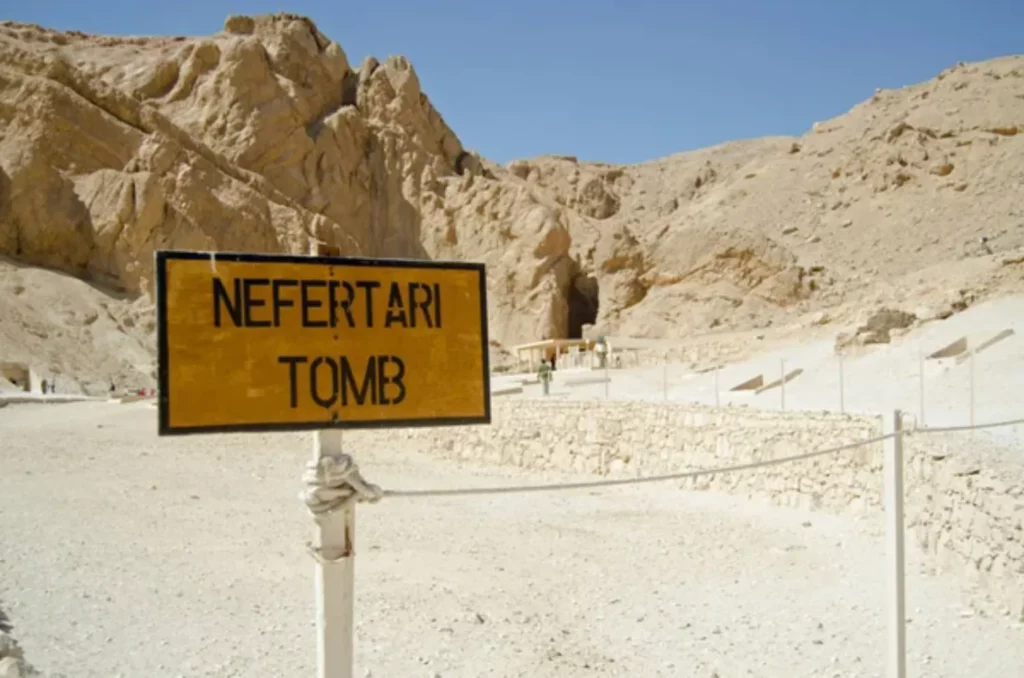
8. The most famous tomb in the Valley of the Queens is that of Queen Nefertari
The tomb of Queen Nefertari, located in the Valley of the Queens, is one of the most exquisite and well-preserved burial sites from ancient Egypt. Queen Nefertari was the beloved wife of Pharaoh Ramesses II, one of Egypt’s most celebrated rulers, during the 19th Dynasty.
Her tomb, designated as QV66, is renowned for its remarkable beauty and the intricate level of craftsmanship displayed in its decorations. The tomb of Queen Nefertari is often referred to as the “Sistine Chapel of Ancient Egypt” due to its stunning wall paintings and intricate hieroglyphics.
The interior of the tomb is adorned with vivid and detailed scenes depicting the queen’s journey to the afterlife, various deities, and rituals that were essential for her safe passage into the next world. The artwork in the tomb is exceptional in its quality and has provided valuable insights into the religious beliefs and customs of ancient Egyptians during the New Kingdom.
The tomb’s exceptional preservation can be attributed to its hidden location and the dry climate of the Valley of the Queens, which protected the delicate paintings from deterioration. In recognition of its significance, the tomb of Queen Nefertari has been meticulously restored and is now open to the public.
9. The Ornate Carvings of the Valleys of Kings and Queens are Well-Preserved
In addition to the tomb of Queen Nefertari, many other burial chambers have had their carvings and paintings preserved throughout the centuries. This is thanks to the dry climate of the region and the fact that the tombs were hidden from the public for so long.
The preservation of the carvings and paintings in the tombs at the Valleys of the Kings and Queens in Egypt is of paramount importance for both their cultural significance and their value to scientific study. These intricate and vibrant decorations provide invaluable insights into the beliefs, customs, and daily life of ancient Egyptians.
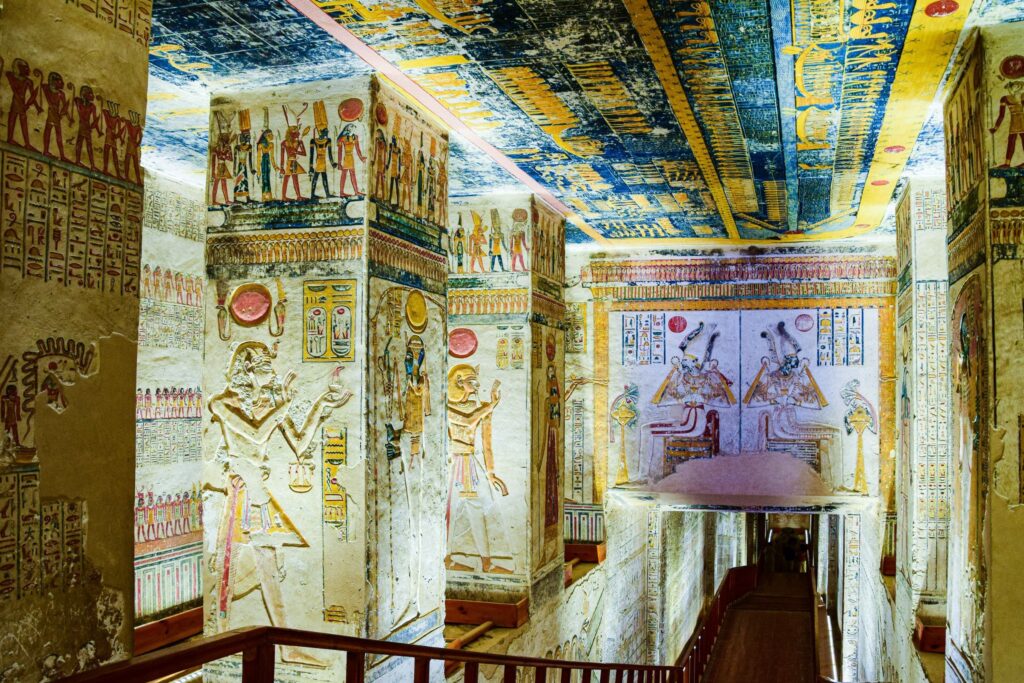
The carvings and paintings found in these tombs serve as historical records, documenting not only the lives and achievements of pharaohs, queens, and nobles but also the religious and mythological aspects of ancient Egyptian culture.
Scenes often depict the journey to the afterlife, the rituals associated with death and resurrection, and interactions with gods and goddesses. These depictions offer a comprehensive view of the Egyptians’ profound spiritual beliefs and their elaborate burial practices.
To preserve these priceless artworks, meticulous efforts are made to control environmental factors such as humidity, temperature, and light within the tombs. Many tombs have been closed to the public to limit human-induced damage, and modern technology is employed to monitor and maintain suitable conditions.
The scientific study of these carvings and paintings provides much knowledge about ancient Egyptian history and culture. Researchers analyze the pigments, materials, and techniques used in their creation, shedding light on the artistic and technological achievements of the time.
Moreover, deciphering the hieroglyphics and symbolism found in these tombs helps historians and archaeologists piece together the stories and biographies of those who were buried within them.
10. The Most Famous Leader Buried in the Valley of the Kings was King Tut
The tomb of Tutankhamun, also known as King Tut, is one of the most famous and significant archaeological discoveries in history. Tutankhamun was a relatively obscure pharaoh of the 18th Dynasty who ruled during the New Kingdom period, around 1332–1323 BC.
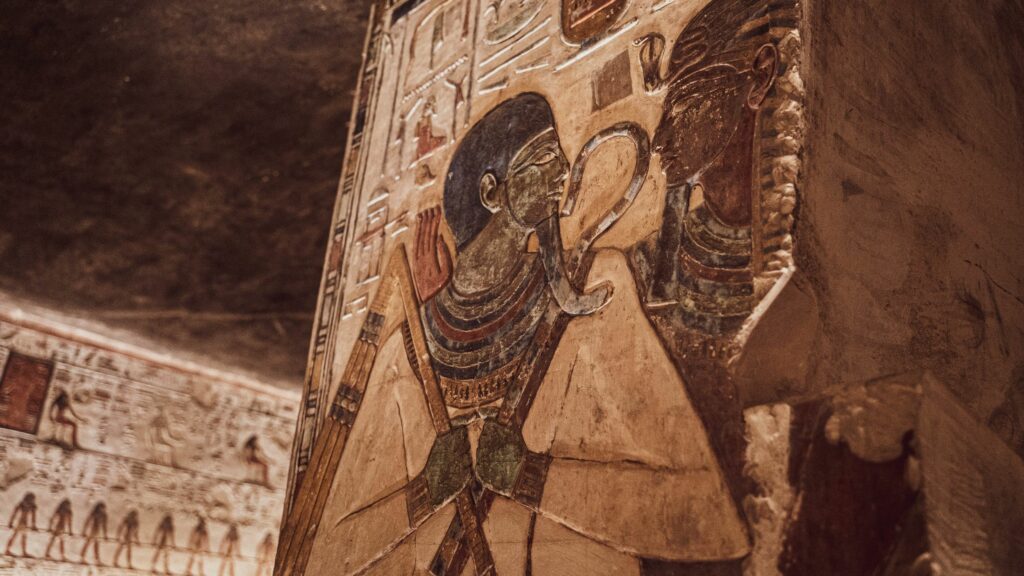
His tomb, designated KV62, remained hidden for over 3,300 years until its remarkable discovery by British archaeologist Howard Carter in 1922. The discovery of King Tut’s tomb was a monumental event that captured the world’s attention.
Inside, Carter and his team uncovered a treasure trove of over 5,000 well-preserved artefacts, including golden funerary masks, jewellery, chariots, and everyday items. The most iconic item found was the exquisite gold death mask that covered Tutankhamun’s mummy, becoming an enduring symbol of ancient Egyptian artistry and wealth.
The discovery of his tomb provided invaluable insights into the burial practices, art, and everyday life of ancient Egypt during the New Kingdom period. The artefacts illuminated the religious beliefs surrounding death, the afterlife, and the role of pharaohs in Egyptian society. They advanced our understanding of hieroglyphics and the ancient Egyptian language.
The discovery of Tutankhamun’s tomb also had a profound impact on Egyptology and archaeology as a whole. The meticulous process of excavating and cataloguing the tomb’s contents took nearly a decade and contributed to the development of modern archaeological techniques and conservation methods.
Furthermore, the global fascination with King Tut and the tomb’s discovery sparked widespread interest in Egyptology and inspired countless exhibitions, books, and documentaries. Tutankhamun’s tomb symbolises Egypt’s rich history and cultural heritage, drawing millions of visitors to museums and exhibitions worldwide.
11. Many Tombs were Looted During the 20th Dynasty
The looting of tombs in the Valleys of the Kings and Queens in Egypt has been a problem spanning several centuries, with incidents documented as far back as antiquity. However, the issue of tomb looting in these valleys was especially significant throughout the 20th Dynasty of Egypt and into the present day.
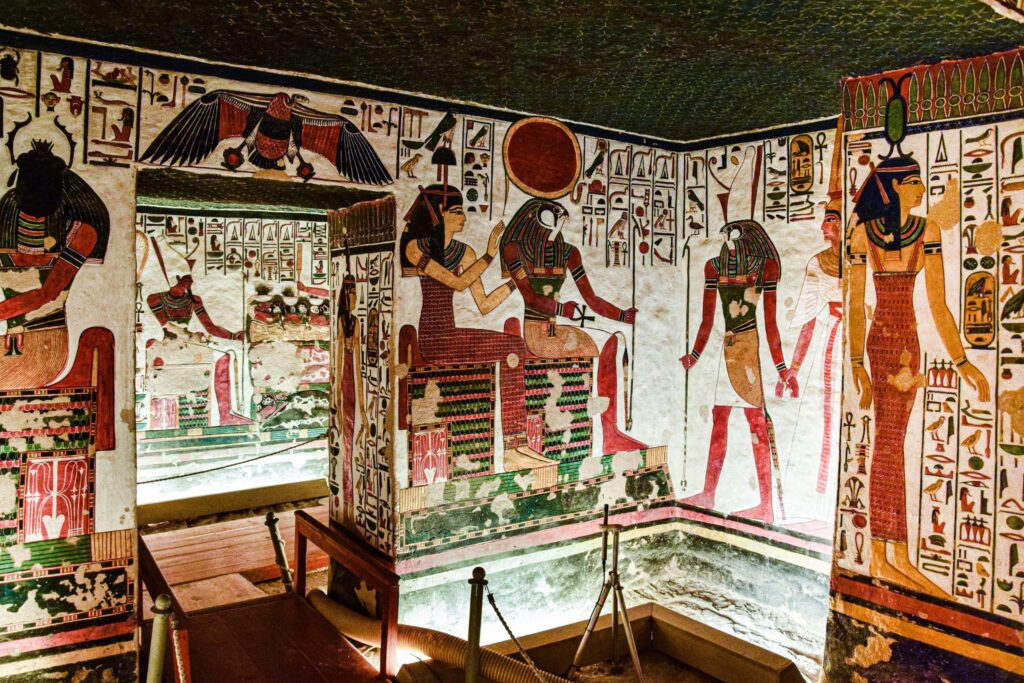
During the 20th Dynasty (circa 12th century BC), the Valley of the Kings saw an increase in tomb robberies. Many pharaohs from this period struggled with internal strife and economic difficulties, making it more challenging to maintain the security of the royal necropolis.
As a result, tombs were often targeted by thieves looking for valuable grave goods and treasures. Some tombs were repeatedly plundered over the centuries.
In modern times, the looting of tombs in the Valleys of Kings and Queens has taken on a more organized and sophisticated dimension. Tomb robbers have used advanced equipment and techniques, including metal detectors and ground-penetrating radar, to locate and access burial chambers more effectively.
The stolen artefacts frequently enter the global antiquities market, fueling illegal trade networks. Despite Egypt’s stringent efforts to combat tomb looting and recover stolen artefacts, the practice continues to pose a significant threat to the preservation of the country’s cultural heritage.
Efforts to combat tomb looting in recent years have included increased security measures, international cooperation, and public awareness campaigns.
While some progress has been made in recovering stolen artefacts and prosecuting those involved in the illegal trade, the ongoing challenge highlights the need for continued vigilance and global commitment to protect and preserve the rich archaeological treasures of the Valleys of Kings and Queens for future generations.

12. The Valleys of Kings and Queens were used for Many other Purposes
The Valleys of Kings and Queens in Egypt, primarily known for their use as burial grounds during the New Kingdom period, served various other purposes throughout history, including their use as cemeteries during Roman times.
After the decline of the New Kingdom and the end of the Pharaonic era, Egypt fell under the rule of various foreign powers, including the Greeks and the Romans.
During the Greco-Roman period (4th century BC to 4th century AD) and later into the Coptic Christian era, the Valleys of Kings and Queens continued to be used as burial grounds. The Romans, in particular, repurposed some of the existing tombs for their own elite, leaving inscriptions and artefacts that reflect this.
In addition to being used as cemeteries, the surrounding areas of the Valleys of Kings and Queens witnessed the establishment of Christian monastic communities during the early Christian period. Hermits and monks seeking solitude and a contemplative lifestyle found the caves in the nearby cliffs conducive to their way of life.
Today, the Valleys of Kings and Queens remain prominent archaeological and tourist destinations, attracting visitors from across the globe who come to explore the tombs of pharaohs, queens, and nobles and gain insight into Egypt’s rich and fascinating history. These valleys continue to be a testament to the enduring cultural and historical significance of ancient Egypt.
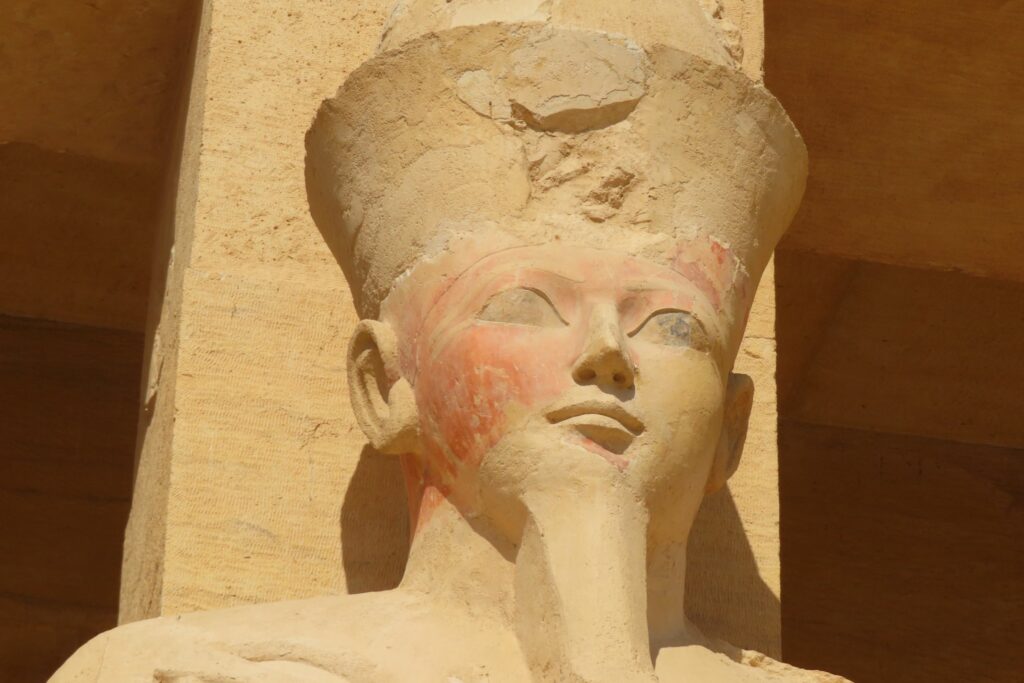
The Valleys of Kings and Queens are Fascinating to Explore
The Valleys of Kings and Queens in Egypt are awe-inspiring windows into the past. They offer a captivating glimpse into the rich and mysterious world of ancient Egypt, their spiritual beliefs, and their culture.
Today, the Valleys of Kings and Queens continue to be places of wonder and inspiration, attracting tourists, scholars, and archaeologists from around the globe. They remind us of the enduring legacy of ancient Egypt and the importance of preserving our cultural heritage for future generations.
As we marvel at the stunning artistry and historical treasures they contain, we are reminded of the timeless allure of the Valleys of Kings and Queens and their unique place in the ever-evolving story of human history.
If you’re interested in learning more about Egypt, check out these 10 Splendid Holy Places in Egypt You Should Visit.






